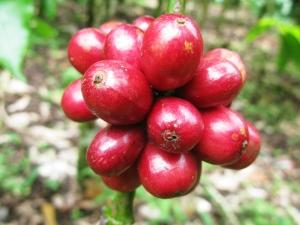The origin of coffee Africa is the hometown of coffee

Africa-the hometown of Coffee
The history of coffee can be traced back more than a thousand years. Number one in the world
The coffee tree was distributed in the African province of KAFFA in Ethiopia.
Now. Local indigenous tribes often grind the fruit of coffee and work with animals
The fat is mixed and kneaded together to make many spherical balls and treat them as
Precious food, specially for those soldiers who are about to go out to battle.
At the time, people didn't understand what it was like for coffee eaters to show hyperactivity--
They don't know that this is caused by the irritation of coffee. Instead, people think of it as a coffee eater.
The religious fanaticism showed that the drink was very mysterious, and coffee became a special item for priests and doctors.
There are two main stories about the process of coffee discovery so far, the most widespread of which is related to herdsmen: a herdsman found that his sheep became particularly excited after eating the fruit of a wild coffee tree. Out of curiosity, he also tasted the coffee. Due to the role of coffee beans, the herdsman was as excited and danced like those banging goats. This scene happened to be hit by a group of monks, so whenever they needed to hold a religious ceremony at night, the monks boiled coffee beans into soup and drank it to keep themselves awake.
The World-the wide spread of Coffee
As batches of slaves were sold from Africa to Yemen and the Arabian Peninsula, coffee was taken everywhere along the way. To be sure, coffee was grown in Yemen in the 15th century or earlier. For hundreds of years, Yemen in the Arabian Peninsula was the only coffee producer in the world. At that time, in Venice, Italy, countless merchant ships traded perfumes, tea and textiles with Arab merchants. In this way, coffee spread to a wide area of Europe through Venice. The market demand for coffee is very strong, so the local coffee has a very strong sense of protection. In the Yemeni port of Mocha, when coffee is shipped out, it is often guarded by heavy troops to prevent coffee saplings from being carried out of the country.
Despite many restrictions, the barrier was finally broken by the Dutch, who finally smuggled surviving coffee trees and seeds to the Netherlands in 1616 and began to grow them in greenhouses.
The strong demand for coffee has laid a solid foundation for the rapid expansion of coffee in areas other than its origin. In the 17th century, the Dutch introduced coffee to their colony of Indonesia. Subsequently, the French transplanted coffee trees in Martinique (in Latin America) and the Antilles (in the West Indies). Later, the British, Spaniards and Portuguese began to invade tropical coffee-growing areas in Asia and America.
Today, coffee has become the second largest trading product in the world after oil.
Important Notice :
前街咖啡 FrontStreet Coffee has moved to new addredd:
FrontStreet Coffee Address: 315,Donghua East Road,GuangZhou
Tel:020 38364473
- Prev

How to be a coffee shop owner?
Today, China has become one of the most important markets in the eyes of international coffee brands. The growing demand for coffee has led many people to the idea of opening cafes. But behind the seemingly elegant and relaxed, there are actually many difficulties, which make many people who are in high spirits lose! In 2014, Italian centenary coffee brand CAFFE PASCUCCI entered China, and in just a few months, it took
- Next

Baking starts the professional baking process from green raw beans.
When roasting begins with green beans and lies in bright red coffee fruits, the wonderful life journey of coffee beans begins. Before roasting these pebble-like coffee beans, coffee growers use natural or washing methods to treat the beans. The so-called natural method is to leave the ripe coffee fruit before shelling and peeling the coffee beans.
Related
- Beginners will see the "Coffee pull flower" guide!
- What is the difference between ice blog purified milk and ordinary milk coffee?
- Why is the Philippines the largest producer of crops in Liberia?
- For coffee extraction, should the fine powder be retained?
- How does extracted espresso fill pressed powder? How much strength does it take to press the powder?
- How to make jasmine cold extract coffee? Is the jasmine + latte good?
- Will this little toy really make the coffee taste better? How does Lily Drip affect coffee extraction?
- Will the action of slapping the filter cup also affect coffee extraction?
- What's the difference between powder-to-water ratio and powder-to-liquid ratio?
- What is the Ethiopian local species? What does it have to do with Heirloom native species?

